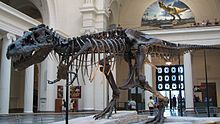Most of my friends have long ago moved away from this podunk I call Hellpeckersville. I don’t really know many people who still live in their childhood home towns, but Pew tells me four in ten stay put. Sure, it’s dull, and small, but it still has neighborhoods, and tree-lined streets, and for me, familiarity never did manage to breed the kind of contempt that would make me want to leave. It’s the kind of place I’m happy that my kids are growing up in.
I like to travel, love to see new places. I used to do quite a bit of that, and hope that in the future I can take my kids traveling too, but I was always happy to get home after. I never got anyplace where I looked around and thought I could live there. Not because it wasn’t beautiful or warm, and not because I wouldn’t want to go back, (because I would!)but because it wasn’t home. I don’t know what makes a person a homebody, I just know that whatever it is I am overflowing with that stuff.
And it’s not that I’m not social, I am. But even then I would rather host the party. Even if that means cleaning first, making all the food, and cleaning up after. It makes me happy as hell to host a crowd. I thought I was snagging some new game people on Saturday night and I was excited like a little kid. Sadly, the wife got sick and the new couple didn’t make it, but next time, baby, and there will be snacks.
When Cleetus used to play out, I remember always being happiest when he played at the Pub that my sister owned. Home base, as it were. Yes, we did drive all over hell and play in strange places, and sometimes I sat alone in a crowd giving him the old “Nancy Reagan Gaze” as he played. I was okay with that. But playing regularly at the Pub? Oh, good times! I never sat alone, I knew everybody. I took my position at the end of the bar and all night long was music, friends, and lively conversation. Maybe some folks can feel that way anywhere they go, but not me. It broke my heart when she lost that joint. Because it was home too.
It used to worry me that I was like this. For a while it seemed that everybody but me had this wanderlust, maybe I was defective in some way. Now it doesn’t bother me. I don’t know why I prefer to stay put, or prefer the familiar, and I’m fine with that. The only thing I worry about now is being able to stay put, but that looks like it just may work out too.




Recent Comments